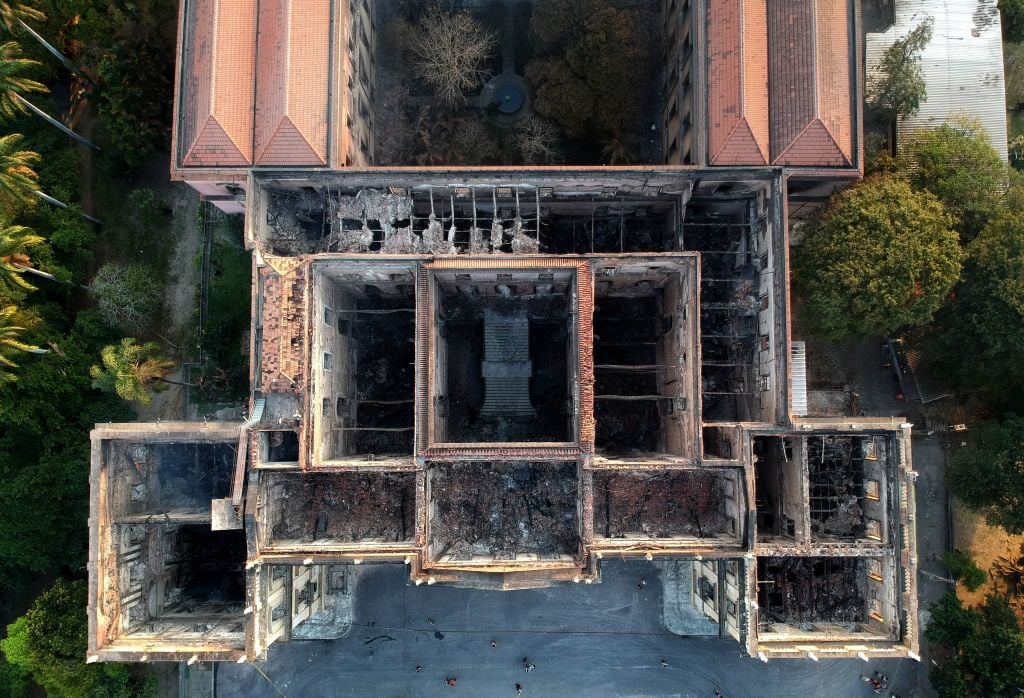
The holiday season’s spirit of giving has reached Rio de Janeiro’s Brazilian National Museum, which was all but destroyed in a fire in September. As officials rescue the remnants of the extensive collection, international private organizations and government agencies are coming together to help the 200-year-old institution, which lost millions of artifacts in the fire.
A collaborative initiative between the Smithsonian Institute, the Fulbright Commission, the US diplomatic mission in Brazil, and the US Department of State will send 14 researchers from the Federal University of Rio de Janeiro, who lost their research in the flames, to one of the Smithsonian’s research labs in the US for 30 days next year, according to the Art Newspaper.
Meanwhile, Google’s Art and Culture app released a digital replica of part of the incinerated museum. The tech giant had been documenting the museum’s 20 million-object collection since 2016, in collaboration with the federal university and the Brazilian ministry of culture, which manages the museum. When the project was interrupted by the fire, the company published what it had documented so far, allowing users to see some of the works that were engulfed by the flames.
“Unfortunately, the destruction of collections like these reminds us of the diverse threats that exist to the world’s heritage—and how important it is to protect it,” wrote Chance Coughenour, program manager of Google Arts and Culture, in a blog post.
Meanwhile the Brazilian government approved $14.3 million in tax concessions in its 2019 budget to help the museum get back on its feet, and will give the university that manages it an additional $640,000 to fund graduate programs. And in October, UNESCO pledged nearly $1.3 million in loans and donations for the museum to begin its long road to recovery.
The German government, too, has offered assistance. Through its consulate in Rio de Janeiro it gave €190,000 ($215,000) to help in the immediate aftermath of the fire and is pledging an additional €1 million ($1.1 million) toward rebuilding the museum in 2019.